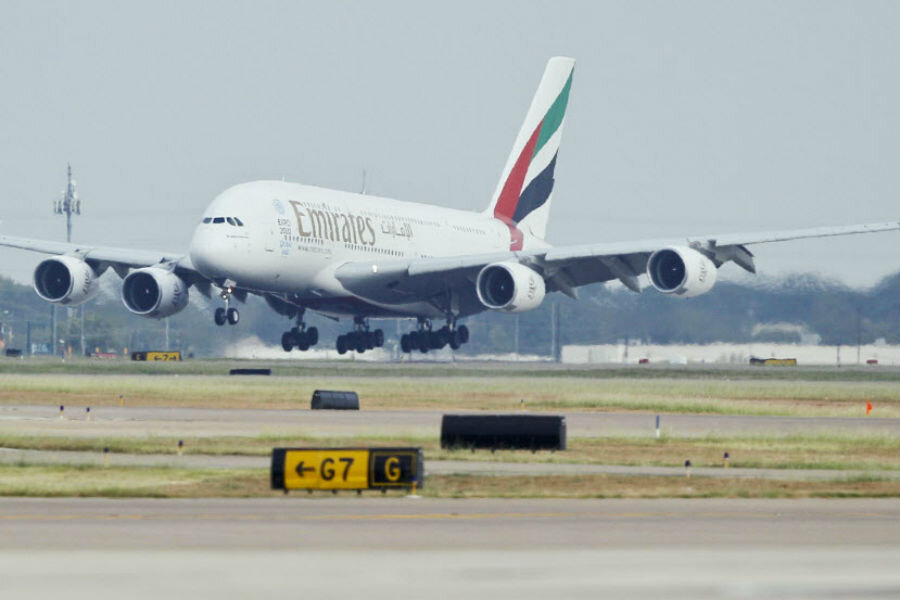Emirates' world's longest flight: How do you survive a 17-hour flight?
Planning to fly from the United Arab Emirates to Panama? Now you can skip the layover. Soon, Emirates Airline will have a nonstop service from from its Dubai hub to Panama City.
Once it begins, Emirates will overtake Qantas for the world’s longest airline route. It will traverse 8,590 miles, outstripping Qantas’ Sydney-Dallas route by about 10 miles, Bloomberg reported.
The flight, which is set to launch in February, will take 17 hours and 35 minutes. The Sydney-Dallas flight takes under 17 hours, according to The Guardian.
Emirates will use the twin-engine 777-200LRs on the route. The plane will have 266 seats in three classes.
"Panama City will be our first destination gateway in Central America, providing a convenient option for our passengers traveling from or through our global hub in Dubai and onward to destinations throughout Central America, the Caribbean and the northern part of South America," Emirates CEO Sheikh Ahmed bin Saeed Al Maktoum told The National. "We're also pleased to be the only commercial airline to offer a daily, first class service to travelers on what will be the world's longest non-stop flight."
Sitting on those tight, not-very-comfortable chairs in economy class for such long hours is not the most ideal situation, but there are ways to safely survive them. Some of those who have taken long flights have some tips to help other fellow travelers prevent boredom, dehydration, and sleep deprivation.
The most important part is seating. If you are going to sit somewhere for long hours, it'd better be good. No matter how much you enjoy the good view and the semi-privacy of the window-seat, on a transoceanic or a transcontinental flight, take an aisle seat. There is no way anyone can avoid the airplane bathroom over a long flight.
The Huffington Post says on planes that has a three-row configuration, the ideal seat would be the one in the middle section:
"Most importantly, it gives you easy access to the aisle and bathroom while also giving the people sitting in the middle seats two options to get to the aisle. This should automatically reduce your chances of getting climbed over (or having to politely exit your seat so others can get out) by 50 percent or somewhat significantly. The aisle seats toward the left and right section of the plane don't have this advantage."
Also using the SeatGuru seating chart will help you locate the best seats while booking your flight.
Independent Traveler website says you need to have a plan on how to spend your time on-board. It emphasizes that working is not a good idea: “You want these hours to disappear almost without a trace. Think headphones and Hollywood blockbusters.”
It’s also important to keep moving. Walk down the aisle few times while on a long flight. Using bathroom breaks is a good opportunity to stretch legs. And if you are into more exercise, CNN has some airline yoga instructions.
Don’t forget to stay hydrated by drinking plenty of water. Independent Traveler also suggests having some “electrolyte solutions” with you, as well.
And finally, get some rest. Have your neck pillow, eye mask, and earplugs with you and when your eyelids started getting heavy while watching a movie, don’t fight back.






